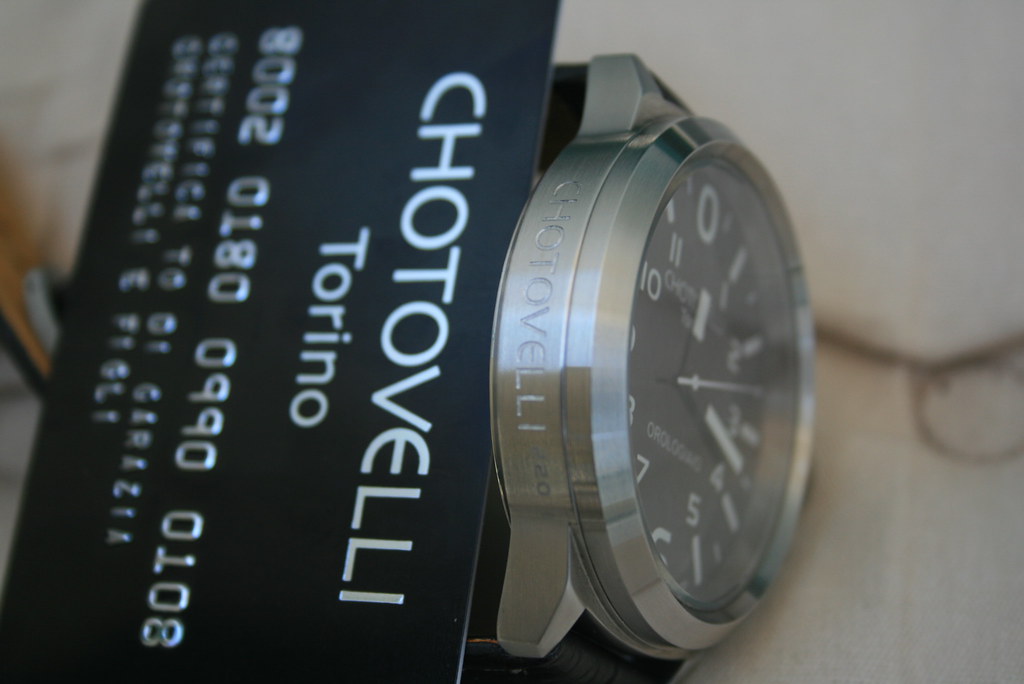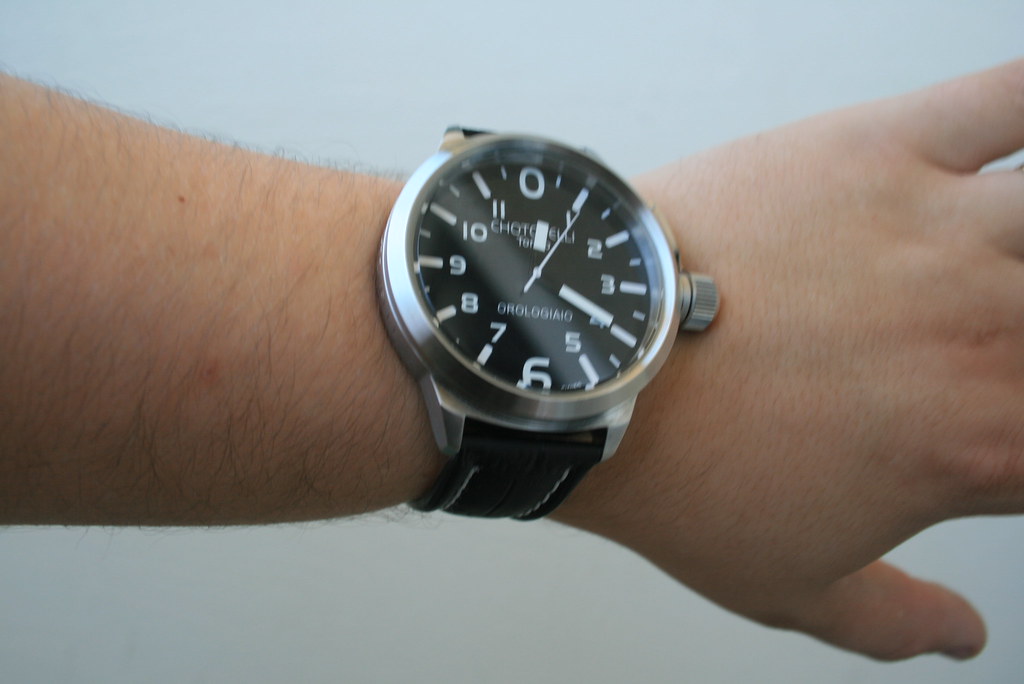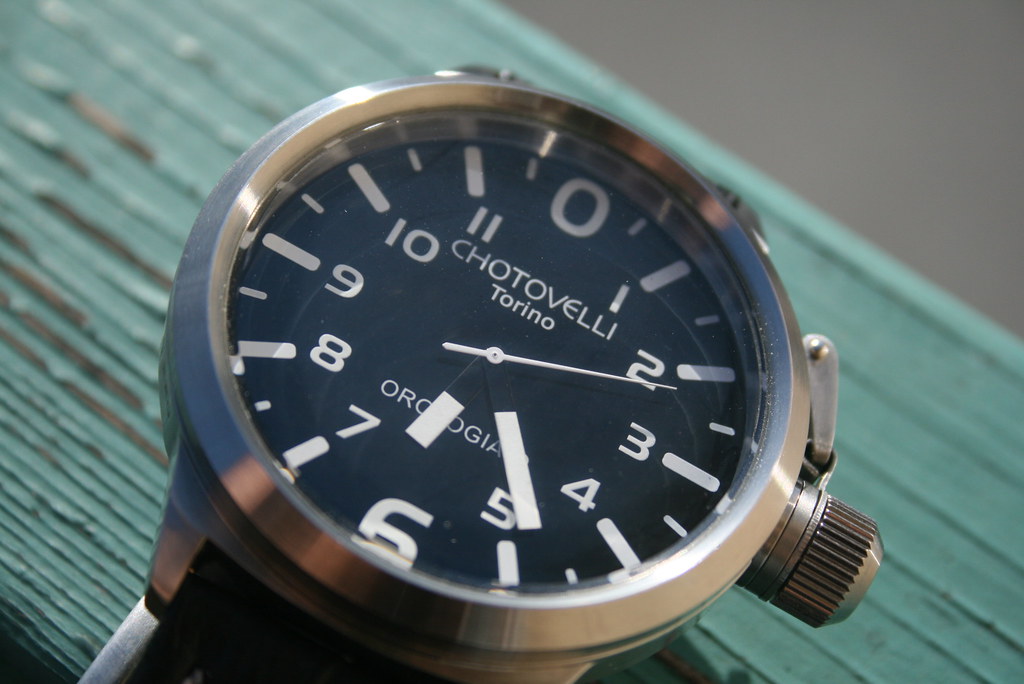Mine just arrived.

Pretty rare model of
Chotovelli Torino watches, TS 7000-2 (marked TS7000-G-07-7002) with Swiss movement 902.105 inside. Stainless steel case with sapphire glass. This model is actually sold out almost everywhere, so there is pretty much no chances to get it now. As far as I know, they don't do it anymore.
Chotovelli watches are made by Chotovelli e Figle company (translates to Chotovelli and Son), which is a third generation watchmakers from Torino. They're known for the bold and elegant design derived and inspired by gauges and speedometers done by the Fiat Group Di Torino, including Lancia Maserati and Alfa Romeo.
The story started in late 1920 with Simone Chotovelli, the first Chotovelli watchmaker (they call it "orologiato"). His was specialising in repairing and restoring old mechanical and automatic movements and was known all over Italy. In 1967 he passed the knowledge and secrets to his son, Yitchak Chotovelli, who continued the business of his father. In 2005, Ilan and Tamara Chotovelli were inspired to revive the family tradition and launched the new Chotovelli line.
Based in Belgium, Chotovelli is a family run business of three generations whose market is European whilst distribution is currently being finalized in the United States. (Some of distributors and reviewers claim Chotovelli stays in Italy.)

Chotovelli is not an expensive watches. However, they are still interesting timepieces, although being often called a "unique attempt to
U-Boat homage". Well, this is something that makes sense, too. :) But lets go over it.
They are huge. Huge, means, they are big. I've got a 52 mm one and, man, you've got to have a big wrists and hands. (I don't, but I'm a big guy, so it doesn't look too stupid.) I really like them. The other big one from my collection is
Moscow Classic "Vodolaz", which is actually 50 mm. But I don't see a big difference, maybe because the "height" also counts and changes an impression.
I have a leather Brietling band on mine. (Replaced the original.) Very nice, sturdy, but I'd prefer an extra pin for me. However, it might be looking stupid then. :)

I think people who love
Welder might like
Chotovelli, too. Because even if I have a Chotovelli, I'd love to have a Welder. :) Some people think that Welder have a better story told because of connection with Italo Fontana, but I don't agree. They are pretty much different, and sometimes you don't need to spot "big names" to find something nice.
See all photos
here.
You can also find a pretty nice review of a different kind of Chotovelli watches
here.
For those who're also interested, Chotovelli can be bought through very reliable person Ernie Romers,
here, who's actually the founder and owner of
Watchuseek forum — the best watches resource in the Web. (You can find
me there, too.)
 They are really slick.
They are really slick. Full set is available at my Flickr page (just paid my account for two more years).
Full set is available at my Flickr page (just paid my account for two more years).










